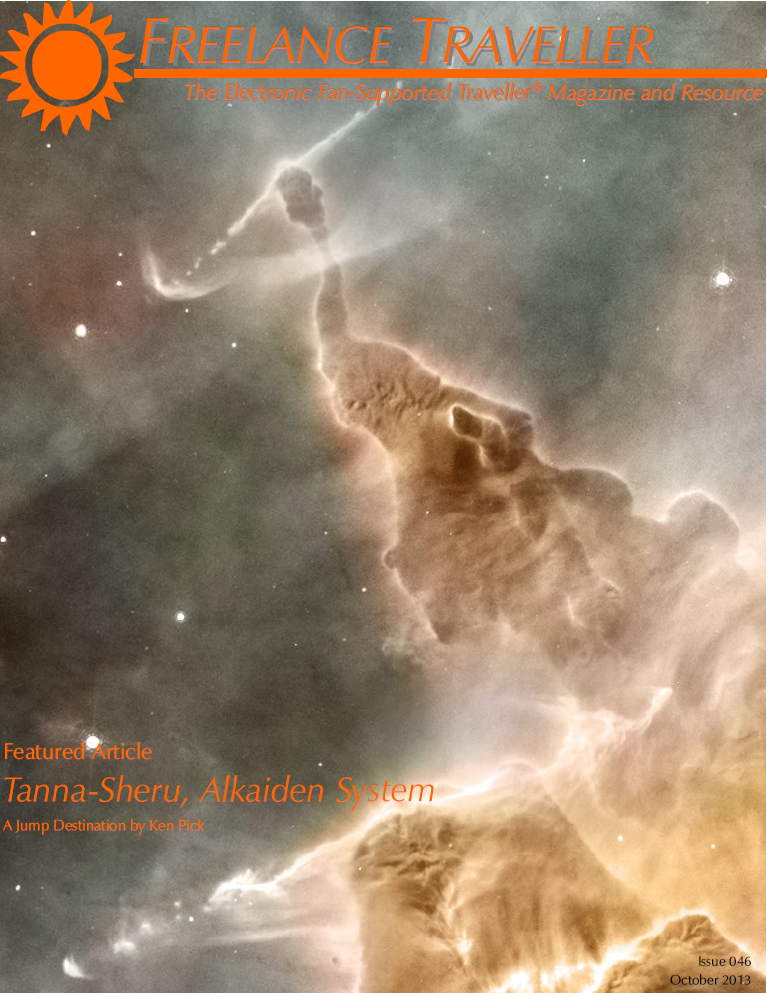Download this issue: ANSI A (US Letter) format or ISO A4 format
The articles listed and linked above are also linked in their appropriate sections of our website.
From the Editor
Last month, I summarized how Traveller makes it possible to play non-combat scenarios, and closed by suggesting that the type of SF that influenced Traveller was at least partly responsible for that. Rather than looking at specific works, such as Piper’s Terro-Human Future History or Tubb’s Dumarest series, I think it would be more appropriate to look at what I want to call, for lack of a better term, the ‘shape’ of SF leading up to the time that Traveller was first published.
The late 1950s and early 1960s were a period of transition, from what is now viewed as ‘classic pulp’ to what has come to be called New Wave. The characteristics of New Wave SF that are relevant to Traveller’s development are principally a focus not on archetypical characters such as the Scientist, the Inventor, or the Adventurer, but on ordinary people, often caught up in extraordinary situations. It was also a time where exploration of social norms and changes to them were beginning to become prominent, and technology (to include ‘mental powers’, a.k.a. psionics) was less an end in itself than a tool for exploring those changes.
Conflict in pulp SF often meant fighting it out with weapons—man vs. man, man vs. alien, or man vs. alien beast. The New Wave moved away from that, as often as not making the conflict into man vs. himself, or vs. his better nature—conflicts of ethics or honor, of understanding oneself or one’s fellow, rather than merely matching wills. It represented in some senses a maturation of the genre, but it also opened up the field to the kind of stories that play to the strengths of Traveller and of other role-playing games. (More next month.)
 Freelance
Traveller
Freelance
Traveller